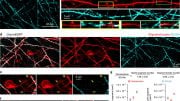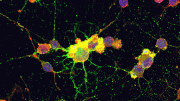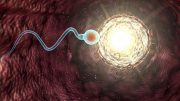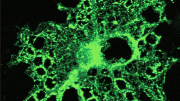
The disease, known as hypomyelinating leukodystrophies, is caused by a mutation in the gene that regulates the transport out of cells of zinc.
Researchers discover a novel mechanism behind a rare brain disease.
Thanks to research teams on opposite sides of the world, a rare but potentially debilitating brain disorder now has a definitive cause.
The disorder, known as hypomyelinating leukodystrophy, is caused by a mutation in the gene that controls the transport out of cells of zinc, an important dietary micronutrient. The study was published in the journal Brain and was jointly led by Dr. Quasar Padiath of the University of Pittsburgh and Dr. Anju Shukla of the Kasturba Medical College in India.
This is the first instance in which a mutation in a zinc transporter gene, in this case, TMEM163, has been definitively connected to the development of any brain disorder. It has the potential to shed light on the function of zinc in healthy brain development as well as in brain injury and disease.
“Discovering a new gene responsible for causing a disease is always exciting; that feeling never gets old,” said Padiath, associate professor of human genetics and neurobiology at Pitt. “And finding out that a zinc transporter is really important for proper myelin development could have many clinical implications and offer new ways of treating other related neurological conditions.”
Hypomyelinating leukodystrophies are rare and often deadly neurological disorders caused by defects in genes involved in the growth or maintenance of myelin, the fatty layer of insulation that surrounds neurons and aids in the transmission of electrical impulses. As the myelin layer thins and is lost in these patients, nerve signals come to a crawl, resulting in a plethora of neurological issues such as impaired movement and balance control, muscle wasting, vision problems, hearing loss, and memory loss.
While genes have been linked to leukodystrophies, the genetic underpinnings for the majority of cases are still unknown. To identify the root cause of a patient’s condition and recommend the most appropriate therapy, clinical neurologists often turn to researchers like Padiath.
By combing through patients’ genomes, Padiath looks for mutations and analyzes the effect of these mutations in cells and animal models, such as mice. Such an analysis is no small feat. To definitively link a new gene mutation to disease symptoms, multiple independent patient cases that share the same gene defect and clinical presentation have to be identified.
For rare diseases, such as hypomyelinating leukodystrophies, finding such cases is possible only by tapping a network of scientific and clinical collaborators from all over the world. In this study, the first patient sample came from Shukla, a professor of medical genetics at Manipal in southwest India. Inquiries to other groups in the U.S. and the Netherlands identified additional families who also carried mutations in the same gene.
A series of in-depth lab studies showed that the TMEM163 mutations impair the transporter’s ability to effectively shunt zinc from inside the cell, causing reduced production of proteins responsible for the synthesis and maintenance of myelin and increasing cell death.
“Understanding how genes cause rare diseases is the first step in the process of finding treatments,” said Padiath. “It is important to remember that diseases that are rare in the global context are very important and real for patients and their families. Studying these diseases helps find cures and give hope to patients and valuable insights into therapeutic targets essential for normal cell functioning.”
Reference: “Variants in the zinc transporter TMEM163 cause a hypomyelinating leukodystrophy” by Michelle C do Rosario, Guillermo Rodriguez Bey, Bruce Nmezi, Fang Liu, Talia Oranburg, Ana S A Cohen, Keith A Coffman, Maya R Brown, Kirill Kiselyov, Quinten Waisfisz, Myrthe T Flohil, Shahyan Siddiqui, Jill A Rosenfeld, Alejandro Iglesias, Katta Mohan Girisha, Nicole I Wolf, Quasar Saleem Padiath and Anju Shukla, 12 August 2022, Brain.
DOI: 10.1093/brain/awac295
The study was funded by the National Institutes of Health.










Be the first to comment on "Scientists Finally Discover the Cause of a Rare Brain Disease"